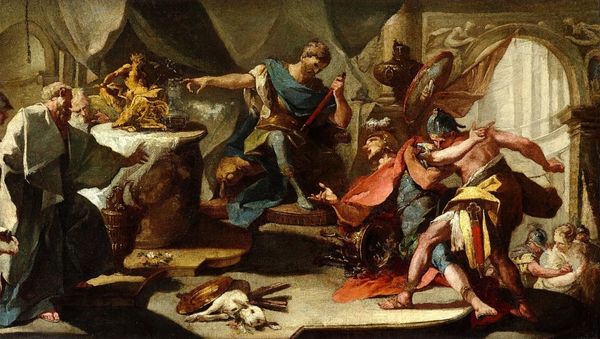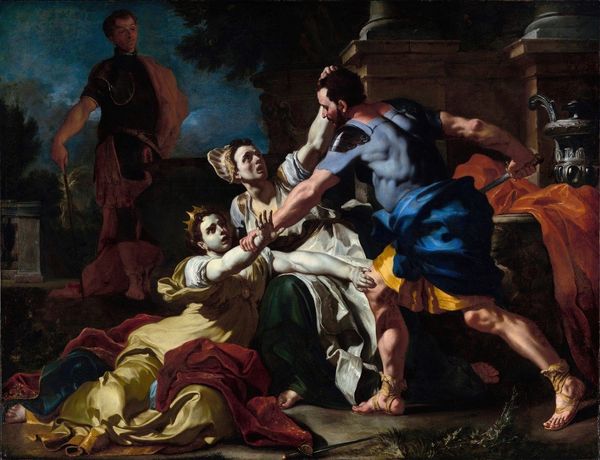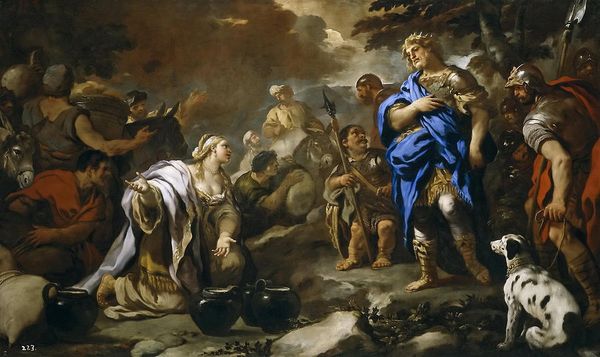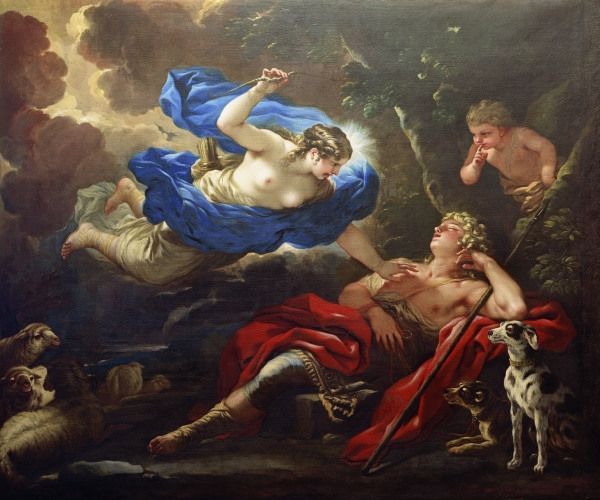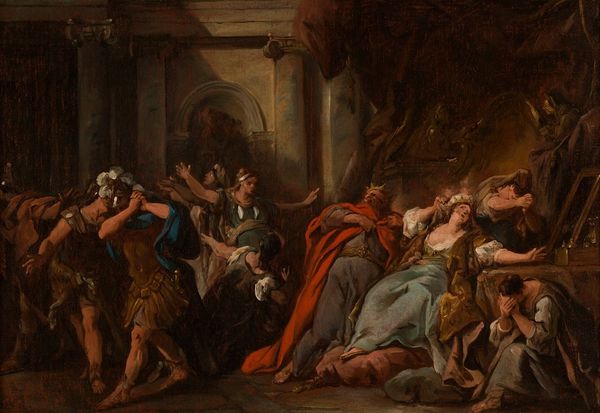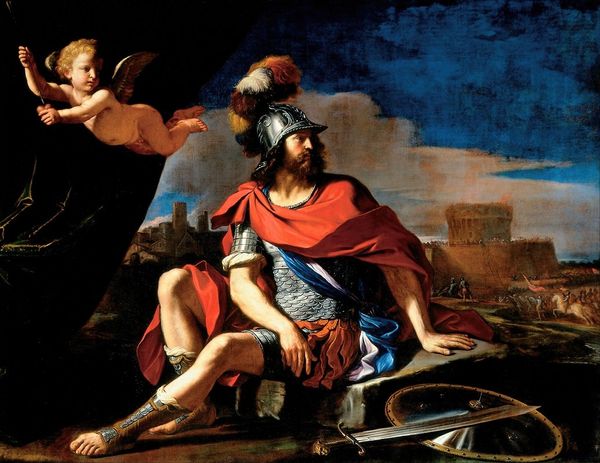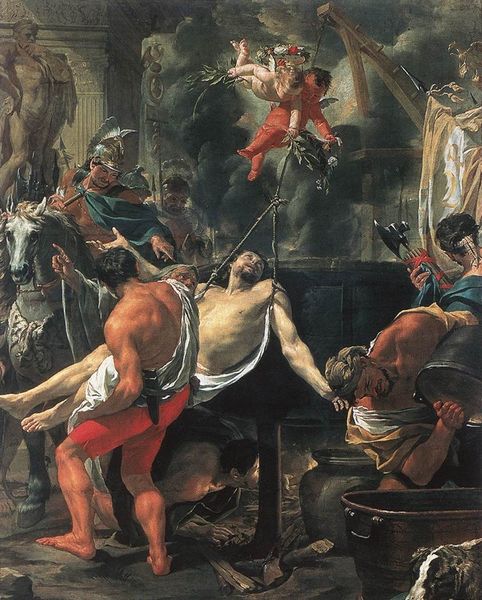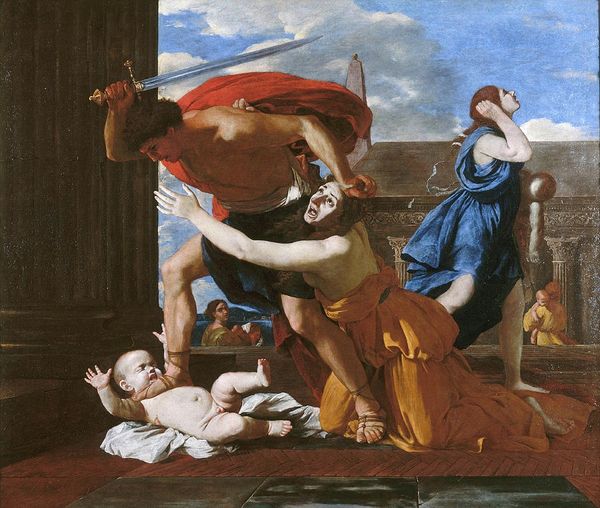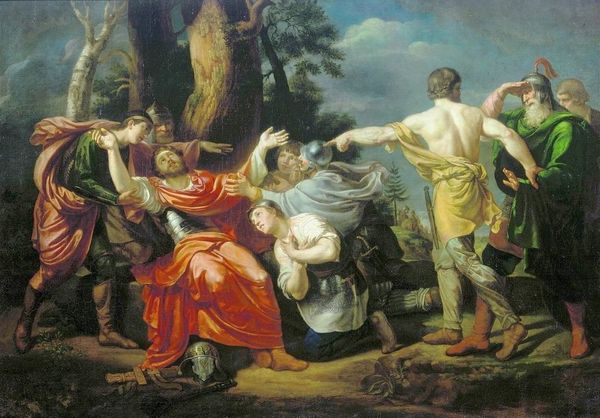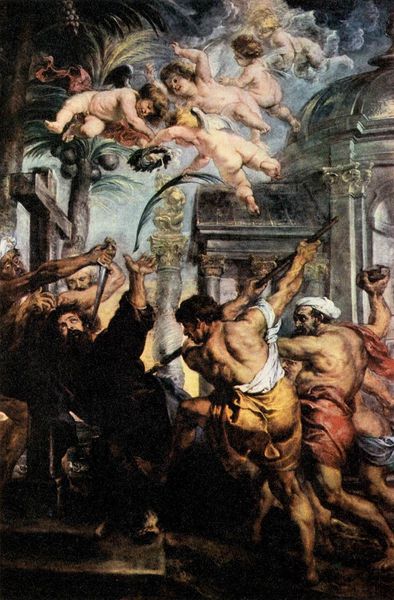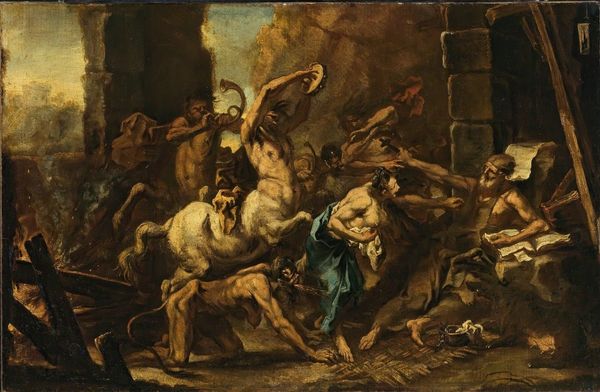
painting, oil-paint
#
narrative-art
#
baroque
#
painting
#
oil-paint
#
landscape
#
figuration
#
mythology
#
human
#
painting painterly
#
history-painting
#
academic-art
#
italian-renaissance
Copyright: Public domain
Curator: Batoni’s 1753 oil painting, "Aeneas fleeing from Troy," strikes me immediately with its overwhelming sense of urgency. The city burns fiercely in the background, yet the figures command our attention, don't they? Editor: Yes, and how! The raw emotion practically leaps off the canvas. You can feel the heat of the fire, the desperation in the woman's face as she flees... The whole scene is a carefully constructed spectacle of survival. I see shades of academic art here. Curator: Indeed. Batoni has skillfully deployed well-understood iconographic types to maximize emotional impact. We see Aeneas, strong and dutiful, carrying his aged father, Anchises, on his shoulders—a potent symbol of piety and lineage. What is he teaching his son? And doesn't this episode itself reflect on the history of Turin? Editor: Certainly, Aeneas embodies resilience, a founding myth connecting Roman greatness to the ruling House of Savoy at the time, who undoubtedly commissioned it to shore up their own sense of legitimacy. A visual language carefully constructed to suggest continuity and inevitability. Curator: Notice, too, how he echoes earlier portrayals of figures like Saint Christopher, a strong man performing an act of carrying and delivering safety— a cultural touchstone for centuries that anyone at the time would easily register. I also can't stop focusing on that small figure, Aeneas's son: can we read this not just as historical and political messaging, but also a more broadly cultural investment into ideals of virtuous leadership, where strong patriarchs secure the nation's lineage into the future? Editor: Precisely! He uses inherited forms to subtly signal the values that elites wish to disseminate. The very materials of oil paint serve a purpose: here it presents smooth flesh tones but at the same time suggests an appeal to timeless authority through a venerable technique. Even in depicting chaos, there's order and purpose driving it. The tension that's carefully plotted out and communicated in an accessible form is fascinating! Curator: I agree! Batoni masterfully harnesses visual vocabularies to imbue an old myth with contemporary significance. I now feel encouraged to understand the ways we might interpret such foundational tropes today. Editor: And it makes you think, doesn't it, about which stories get told and retold, and who gets to decide which memories we inherit and pass on. It speaks volumes!
Comments
No comments
Be the first to comment and join the conversation on the ultimate creative platform.
